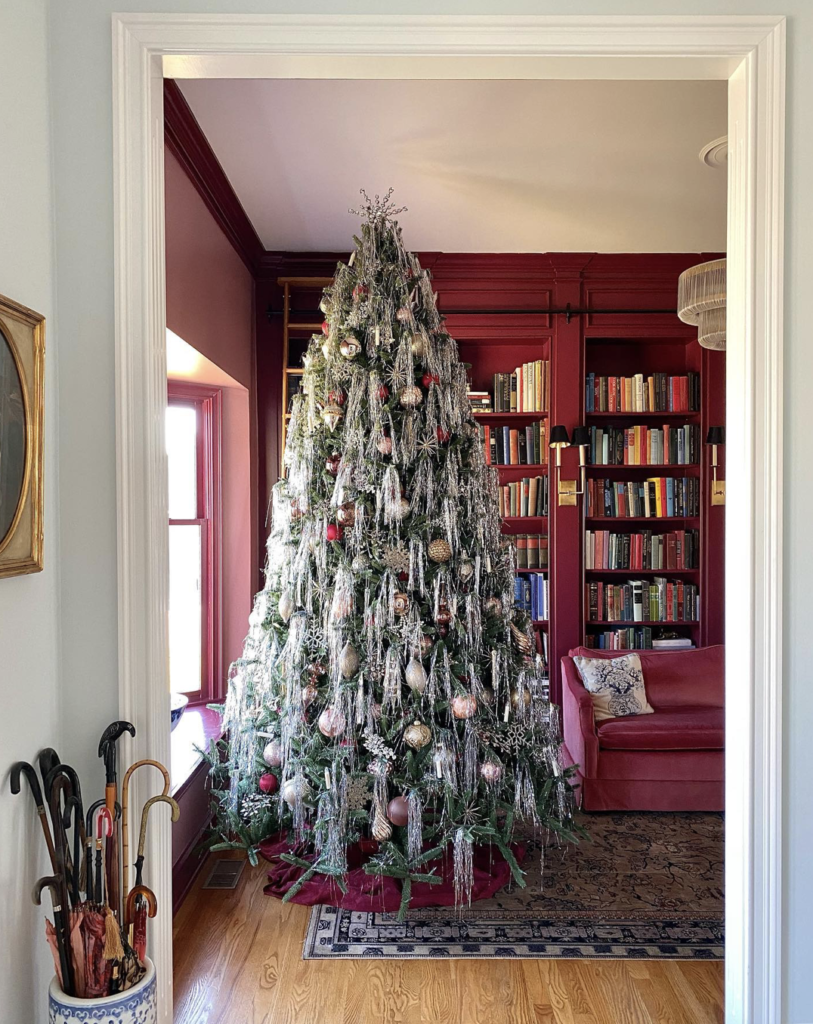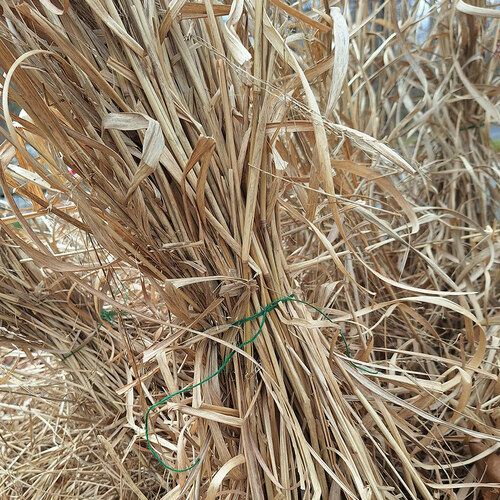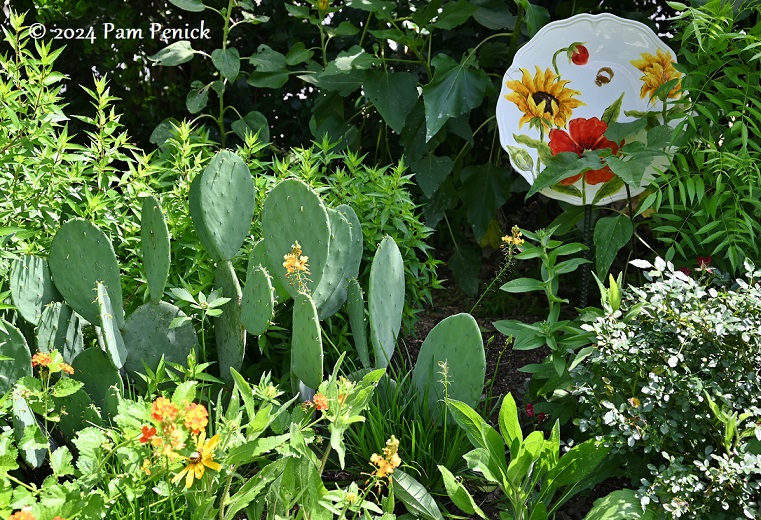You may not intend to prune your trees yourself.
But even if you employ a tree surgeon, there are key facts you need to know about tree maintenance.
This will help you find a good tree surgeon and get the best results.
Because pruning trees isn’t just a question of cutting them down to the size you want.
You can safely reduce the height of some trees, but it’s very difficult to reduce their width. And yet it’s exactly the opposite with other trees.
And if you prune too much off many trees, they’ll often respond by re-doubling their growth. You could end up with much more tree rather than less. This can happen very quickly. And the shape isn’t likely to look as good.
Like most gardeners, I have a mix of trees in my garden. Many were planted by my predecessors. There are two evergreens, both of which have grown rather too large.
I also have a number of deciduous trees of different ages, shapes and style. So I engaged tree surgeons About Trees to check all my trees and reduce the size of the larger ones.
And I asked Wayne Elwell of About Trees to explain what you need to know before you prune your trees.
(Disclosure: I engaged About Trees at the normal commercial fee and only invited Wayne for interview after that had been agreed. I think it’s worth explaining this, as sometimes there are discounts or free services involved when companies are featured on blogs etc. But not in this case.)
When should you prune your trees?
Autumn and winter are a good time to prune most trees, because they’re not growing. Some trees, such as the prunus (cherry) family should be pruned in summer.
You can look up the ideal time to prune a particular kind of tree online.
But most gardeners agree that there is an ‘ideal’ time to do work. And then there’s when you’ve got time.
Autumn and winter are good times to prune trees.
How do you reduce the height of a tall tree?
Wayne explained that this depends on the tree and how it both grows. Some trees, such as birches, don’t like being pruned heavily at all. ‘Birches don’t recover well if you prune into the heart wood,’ says Wayne. ‘So any pruning has to be respectful.’
To reduce the height of a birch, you’d need to do some gentle pruning all around the crown.
Simply cutting along the top of a tree to reduce its height isn’t always successful. Many trees will sprout vigorous new growth around the cuts. You could end up with a much denser tree which would cast deeper shade. And you often ruin its shape.
‘A client might be pleased to see that we’ve pruned a tree back so that it looks really small,’ says Wayne. ‘but long term, you’re going to promote more growth, a thicker canopy, more leaves and larger leaves.’
However, you can cut across the top of some trees to reduce the height. About Trees reduced the height of my Lawson cypress and also my liquidambar by simply removing the top few metres of growth.


Birch trees need careful pruning – don’t cut too much off. About Trees shortened some branches and thinned out the canopy of the Himalayan birch on the left. They thinned the canopy of the younger Himalayan birch on the right. This will allow more light through both trees.


Another view of the Himalayan birch, Prunus ‘Snow Goose’ and Liquidambar. They have all been thinned with a gentle crown reduction to avoid stimulating too much re-growth or spoiling their shape.
How do you prune a conifer?
While you can reduce the height of a conifer, it’s very difficult to reduce the width. This is particularly true of a conifer that has grown too large.
Most conifers won’t grow back if you cut beyond the living foliage.
So you can trim the sides of a conifer back every year if you want to keep it neat. This is how conifer hedges are usually treated.
But if you don’t trim it, the branches will grow to their full length. And then you’ll be very limited on how far back you can cut.
If you cut too much off, you could end up with only bare brown wood and no foliage. That won’t re-grow.
So if you want to keep the size of a conifer under control, prune it back regularly.
‘Lifting the crown’
If you’re trying to reduce the impact of a large, mature evergreen, such as a conifer, you can cut off the lower branches. This is known as ‘lifting the crown’ or ‘lifting the skirt’.
When we first moved in, over twenty years ago, a friend suggested we remove the lower branches from our conifer. This created much more light around the base of the tree.
Wayne’s team took more branches off and really lifted the crown. This has made even more difference and will mean I can grow more around the tree.


How to create more light by lifting the crown of your trees
Other evergreen trees – can you topiarise evergreen magnolia?
We have an overgrown Magnolia grandiflora. It’s about 25 years old and we have never pruned it.
A friend suggested that I topiarise it. In the United States this tree is often topiarised and it looks wonderful.
However, Wayne told me that topiarising has to be started young. It would take a very long time to get a tree to re-grow into a shape.
But if you start trimming and shaping when the tree is only a few years old, then you can topiarise evergreen magnolia. It’s important to trim every year, however, to keep the shape.
How do you prune a very young tree?
I planted a young silver birch in the far corner of my garden about two years ago.
Wayne advises me to do ‘formative pruning’. This is suitable for young trees in their first few years.
‘Look at a very young tree and see how the form is going to translate to a mature tree.’
This is a good time to take off branches you don’t want or branches that are crossing. Creating a good shape in the first few years will have benefits throughout the rest of the tree’s life.
‘When a tree’s really young, you can remove branches you don’t want. And you’re only making small wounds,’ he says. These heal better and don’t leave marks.
‘Formative pruning is suitable for any very young tree.’
What about pruning a mature tree?
The largest – and probably the oldest – tree in my garden is a huge Robinia ‘Frisia’ (False acacia). It is around 40-50 years old.
The main reasons why people want to prune a mature tree are to create a lighter canopy, to ‘lift the crown’ or to make sure it’s safe.
I asked Wayne to check that it was safe. He decided to trim any dead wood out of it, but otherwise to reduce the canopy very gently by thinning it discreetly.
This is another tree where you can’t just chop the top branches off and expect it to look good.
He also spotted an ‘included union.’ This is where the treee has two main stems (leaders) growing upwards and they have fused. ‘This can create a weakness in the tree,’ he says. ‘But you can take the pressure off an included union by removing just a few branches.’
How to prune a very upright or ‘vase-shaped’ tree
You can’t just cut the top off a ‘vase-shaped’ tree like my Prunus ‘Snow Goose’. It would stimulate the extra shoots and growth and spoil the shape of the tree.
However Wayne pointed out that we can thin out the branches, so that the tree is narrower and more airy. This involves taking out whole branches, rather than cutting branches shorter.
It keeps the shape of the tree intact.
How do you prune birch trees?
Wayne explained that birch trees are very sensitive and don’t respond well to heavy pruning. They may start to over-compensate by growing too many new shoots or the wood in the centre may rot.
I have one silver birch that is around 15 years old. It was looking very dense and the advantage of birch is that it’s light and airy.
At 15, it’s too late for formative pruning, but Wayne advised a light pruning to make the crown more airy. He also pointed out that there was a climber in the tree, which could be removed.


Silver birch – before and after crown reduction
Are climbers bad for trees?
Arborists don’t like finding climbers growing through trees. ‘If you’re trying to do work to a tree or assess its health, then a climber gets in the way. And it can cover up defects,’ says Wayne.
Many people think that ivy, for example, kills trees, but it doesn’t. ‘Ivy isn’t a parasite, it won’t kill the tree,’ says Wayne. ‘But it can cover up problems in the tree and get in the way of good pruning.’
Ivy is a wonderful habitat for wildlife, especially in winter, so there’s always a balance to consider, says Wayne.
If you live in the United States, check whether English ivy is invasive in your area.
Can you plant 3 (or more) trees very close together to achieve a multi-stemmed effect?
When we re-vamped the garden in 2010, there was a fashion for planting three trees together in the same hole to achieve a multi-stemmed effect.
Two of my trees failed and only one thrived. I’ve known several other people have similar issues, although I do also know one or two people where this has been successful.
Wayne said that tree nurseries now widely supply multi-stemmed trees. It’s better to buy them multi-stemmed because many people do find that one or more trees fail if they’re planted in such close groups.
One of our three trees died immediately. Another simply failed to thrive. So we dug it up and moved it two years ago.
‘The trouble is that when they’re planted so close together, it’s difficult to dig them up without cutting the root ball too much,’ says Wayne. So the tree often won’t do any better in its new spot.
And indeed the tree we moved two years ago has never looked any happier in its new spot.
Wayne suggested we take it out. Young silver birches are not expensive and we’d probably be better off replacing it.
Can you keep a large tree small?
We have a young tree – a Liquidambar – which is around 9-10 years old. It could grow much taller in the next 10 years, but we want to keep it at around the height it is now.
I asked Wayne how we should go about this. He said that we would have to reduce it in height within the next five years, then continue to prune it back to the same point every five years.
Because we’re starting when the tree is not yet mature, there shouldn’t be too much reduction each time, so it shouldn’t stimulate too vigorous a re-growth.
How to find a good tree surgeon
We engaged About Trees because a friend recommended them. These friends have several beautiful mature trees and I really liked what About Trees had done with them.
You can find qualified tree surgeons and arborists by consulting The Arboricultural Association in the UK and the International Society of Arboriculturalists worldwide.
Wayne explained that tree surgery is divided into two skills. One is the use of the equipment and safety. The other is what specific trees need, how a tree works and how pruning differs. That’s why simply getting hold of someone who can use a chainsaw could be the worst thing you do for your trees. There’s more about this in Tree Surgeon, Arborist or Chain-Saw Man?
How much does a tree surgeon cost?
I think it’s important to recognise that it costs money to prune your trees properly. It’s probably the biggest investment you’ll make in terms of garden maintenance.
I wouldn’t want to tell you that you can do this yourself ‘easily’. Pruning trees yourself can be very dangerous.
Nor do I think it’s right to suggest that all you need is a few good tips and then you can engage anyone who knocks at the door claiming to be a tree surgeon and offering a discount ‘because they’re in the area.’
Tree surgeons have expensive equipment to maintain and a high level of skills. A cheap tree surgeon won’t know as much about the trees and how they should look. Good tree surgeons are also likely to be booked up. They don’t knock on doors offering cheap services.
If you have a small garden with just one or two trees, think about spending hundreds of pounds (or dollars) on a good tree surgeon.
In a middle-sized garden like mine, then you can expect to think about the low thousands. You probably only have to call a tree surgeon in every 5-7 years, or not even that.
You can also minimise how often you need a tree surgeon by choosing the right trees for your garden. See Jamie Butterworth’s advice on choosing trees for small gardens here.
And make sure you plant your tree correctly. It will make a huge difference to how it grows.
Pin to remember what you need to know when you prune your trees
And do join us. Sign up here for a free weekly email with more garden tips, ideas and inspiration.








